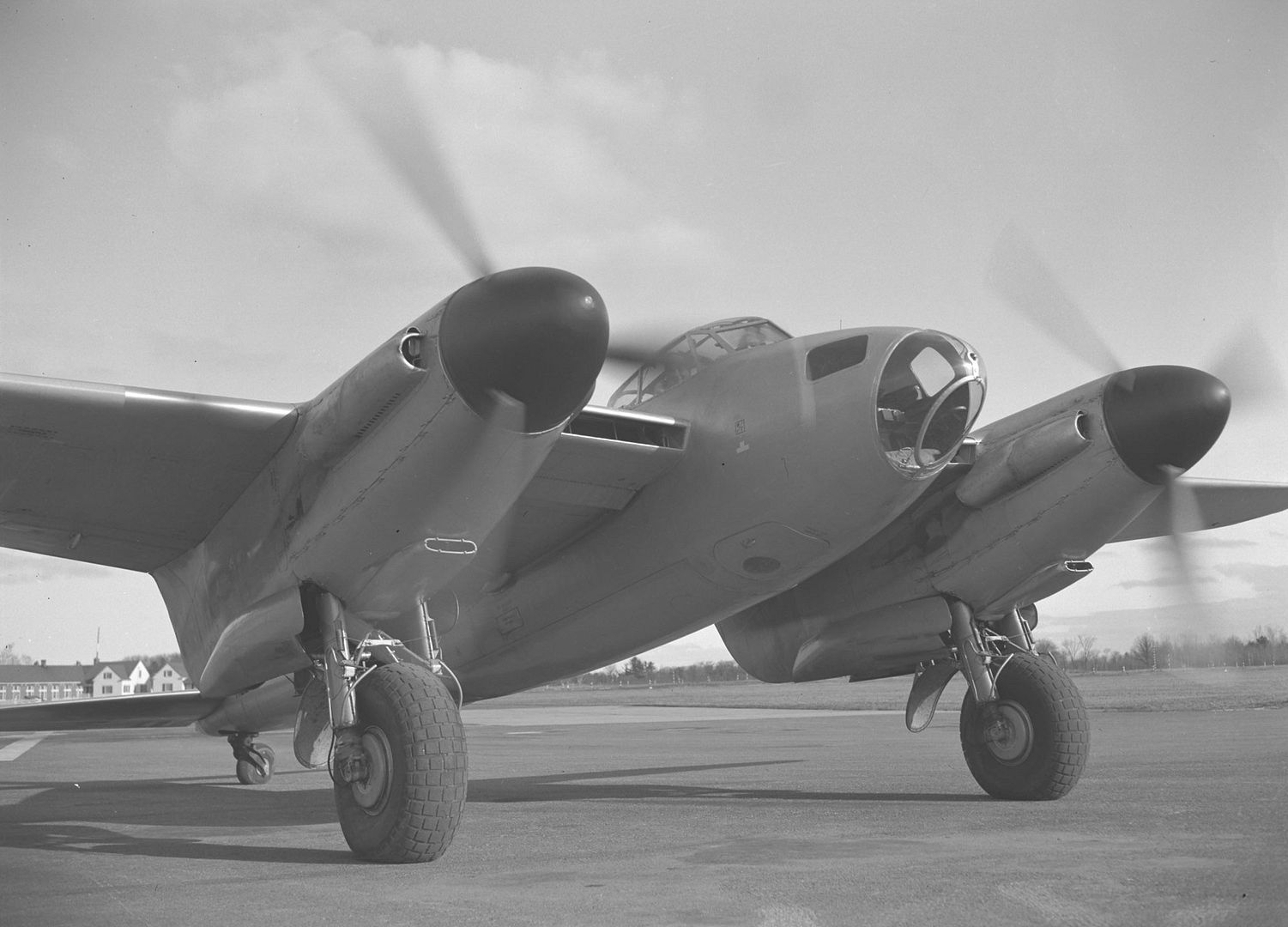Forums
- Forums
- Axis And Allies Forum
- General Discussion
- Photo of the week
Photo of the week
Post a reply
- Go to Previous topic
- Go to Next topic
- Go to Welcome
- Go to Introduce Yourself
- Go to General Discussion
- Go to Screenshots, Images and Videos
- Go to Off topic
- Go to Works in Progress
- Go to Skinning Tips / Tutorials
- Go to Skin Requests
- Go to IJAAF Library
- Go to Luftwaffe Library
- Go to RAF Library
- Go to USAAF / USN Library
- Go to Misc Library
- Go to The Ops Room
- Go to Made in Germany
- Go to Campaigns and Missions
- Go to Works in Progress
- Go to Juri's Air-Raid Shelter
- Go to Campaigns and Missions
- Go to Works in Progress
- Go to Skinpacks
- Go to External Projects Discussion
- Go to Books & Resources
-
 Main AdminDavid McCampbell was born on January 16, 1910, in Bessemer, Alabama to Andrew Jackson (A.J.) and E. La Valle (Perry) McCampbell. At thirteen he left home to attend the Staunton Military Academy in Staunton, Virginia, and later Georgia Tech in Atlanta, before being appointed to the U.S. Naval Academy in 1929 by Senator P. Trammell of Florida. While at the Naval Academy, McCampbell excelled in athletics, becoming A.A.U. Diving Champion - Mid-Atlantic States in 1931 and Eastern Intercollegiate Diving Champion in 1932. He graduated from the Naval Academy in 1933 with a B.S. degree in Marine Engineering. The same day, he was honorably discharged from the Navy due to Congressional legislation limiting officer commissions and was recommissioned as an Ensign in the U.S. Naval Reserve. For the next year, McCampbell worked for a construction company in Alabama and as an assembly mechanic with Douglas Aircraft Corporation.
Main AdminDavid McCampbell was born on January 16, 1910, in Bessemer, Alabama to Andrew Jackson (A.J.) and E. La Valle (Perry) McCampbell. At thirteen he left home to attend the Staunton Military Academy in Staunton, Virginia, and later Georgia Tech in Atlanta, before being appointed to the U.S. Naval Academy in 1929 by Senator P. Trammell of Florida. While at the Naval Academy, McCampbell excelled in athletics, becoming A.A.U. Diving Champion - Mid-Atlantic States in 1931 and Eastern Intercollegiate Diving Champion in 1932. He graduated from the Naval Academy in 1933 with a B.S. degree in Marine Engineering. The same day, he was honorably discharged from the Navy due to Congressional legislation limiting officer commissions and was recommissioned as an Ensign in the U.S. Naval Reserve. For the next year, McCampbell worked for a construction company in Alabama and as an assembly mechanic with Douglas Aircraft Corporation.
On June 14, 1934, McCampbell was transferred from the Naval Reserve to the U.S. Navy. His first assignment was aboard the cruiser USS Portland. In July, 1936, he was assigned as Aircraft Gunnery Observer with Scouting Squadron 11. In 1937, McCampbell's flying career finally got off the ground at Pensacola Naval Air Station where he reported for flight training. A year later, he was designated a Naval Aviator and received his first flying assignment with Fighting Squadron 4 aboard the USS Ranger where he served two years. In 1940, he was transferred to the USS Wasp?s Air Group in the Atlantic Ocean to serve as Landing Signal Officer. The work of a Landing Signal Officer on a carrier was extremely exacting, for the safety and lives of the pilots and crewmen rested upon him. He served as Landing Signal Officer until the Wasp was sunk on September 15, 1942 by a Japanese submarine while on routine patrol south of Guadalcanal.
Next, McCampbell returned home for a rest and promotion to Lt. Commander while he served as an instructor of Landing Signal Officers in Melbourne, Florida. But the war was heating up and the Navy needed experienced men to command fighter squadrons. In August of 1943, McCampbell became commanding officer of Fighting Squadron 15 where he served from September 1943 until February 1944, when he assumed command of Air Group Fifteen, which came to call itself the ?Fabled Fifteen.?
McCampbell entered combat on May 14 [ and flew at least four Grumman F6F Hellcats while aboard the Essex: an F6F-3 named Monsoon Maiden (damaged by AA, removed from service on 20 May 1944), an F6F-3 named The Minsi (10? kills), an F6F-5 named Minsi II, and an F6F-5 named Minsi III (Bureau Number 70143), in which he scored the last 23? of his 34 kills.
In the spring of 1944, the Fabled Fifteen went to war aboard the USS Essex. McCampbell was given command of the entire Essex air group -- bombers, fighters, and torpedo planes. He was thirty-four years old and he was finally going to war the way he wanted it, with a fighter plane in his hands! The Fabled Fifteen, led by McCampbell, slashed a devastating path through the sky all the way to the Philippines before the exhausted fliers went home. During their tour of approximately seven months and more than 20,000 hours of operations, this group destroyed more enemy planes (318 airborne and 348 on the ground) and sank more enemy ships (296,500 tons sunk, and more than a half million tons damaged and/or probably sunk) than any other air group in the Pacific war. Among the major combat ships sunk was the Japanese battleship MUSASHI, three carriers and a heavy cruiser. The Fabled Fifteen became one of the most highly decorated air groups of the war.
Despite the impressive record of the Fabled Fifteen, McCampbell's personal record is even more unprecedented. He entered combat on May 19, 1944, leading a fighter sweep over Marcus Island. He shot down his first Japanese plane on the 11th of June, 1944 during air strikes against Japanese positions on Saipan. In the first and second Battles of the Philippine Sea, McCampbell led his fighter planes against a force of eighty Japanese carrier-based aircraft bearing down on the U.S. Fleet on June 19, 1944. McCampbell personally destroyed seven hostile planes and two probable during this single engagement in which the larger enemy attack force was routed and virtually annihilated. Fighter pilots remember the battle as the famous ?Marianas Turkey Shoot.? By September 1944, McCampbell had shot down nineteen Japanese planes and the side of his Hellcat was cluttered with miniature Japanese flags. In October, during the Battle of Leyte Gulf, McCampbell, assisted by only one other plane, intercepted and daringly attacked a formation of sixty hostile enemy aircraft approaching American forces. Together they accounted for fifteen downed enemy planes with McCampbell personally shooting down nine enemy planes and two probables, a feat unequaled in the annals of combat aviation. He also completely disorganized the enemy group, forcing the remainder to abandon the attack before a single aircraft could reach the U.S. Fleet.
After almost seven months of service in the Pacific, McCampbell had destroyed 34 airborne enemy planes, the greatest number of enemy planes ever shot down by an American pilot during a single tour of combat duty, as well as 20 planes on the ground. David McCampbell became the top scoring Naval fighter pilot of World War II. As a result of these incredible feats, McCampbell received numerous honors and decorations including the Congressional Medal of Honor which was personally presented to him by President Franklin D. Roosevelt. McCampbell also received the Navy Cross, the Silver Star Medal, Legion of Merit, and the Distinguished Flying Cross.
After returning home, McCampbell served from March 1945 to January 1947 at the Naval Air Station in Norfolk, Virginia as Chief of Staff to Commander Fleet Air and as Commander of Carrier Air Groups. He was next assigned to the Armed Forces Staff College in Norfolk, first as a student and then as a member of the staff in the Intelligence Division. Later, he was assigned to Buenos Aires, Argentina where he served as the Senior Naval Aviation Advisor to the Argentine Navy from 1948 to January 1951. In February of 1951, McCampbell joined the USS Franklin D. Roosevelt as Executive Officer. From March 1952 until July 1953, he was the Planning Officer on the Staff of Commander Aircraft Atlantic. In the summer of 1953 he assumed command of the Naval Air Technical Training Center at Jacksonville, Florida and a year later became Flight Test Coordinator at the Naval Air Test Center in Maryland. In the years following, he commanded the USS Severn and USS Bon Homme Richard until he was assigned to the Joint Chiefs of Staff in Washington, D.C. in 1960. In September, 1962 he became the Assistant Deputy Chief of Staff for Operations to the Commander in Chief of Continental Air Defense Command. He remained there until he retired from the Navy in 1964. David McCampbell died in Florida after a lengthy illness on June 30, 1996.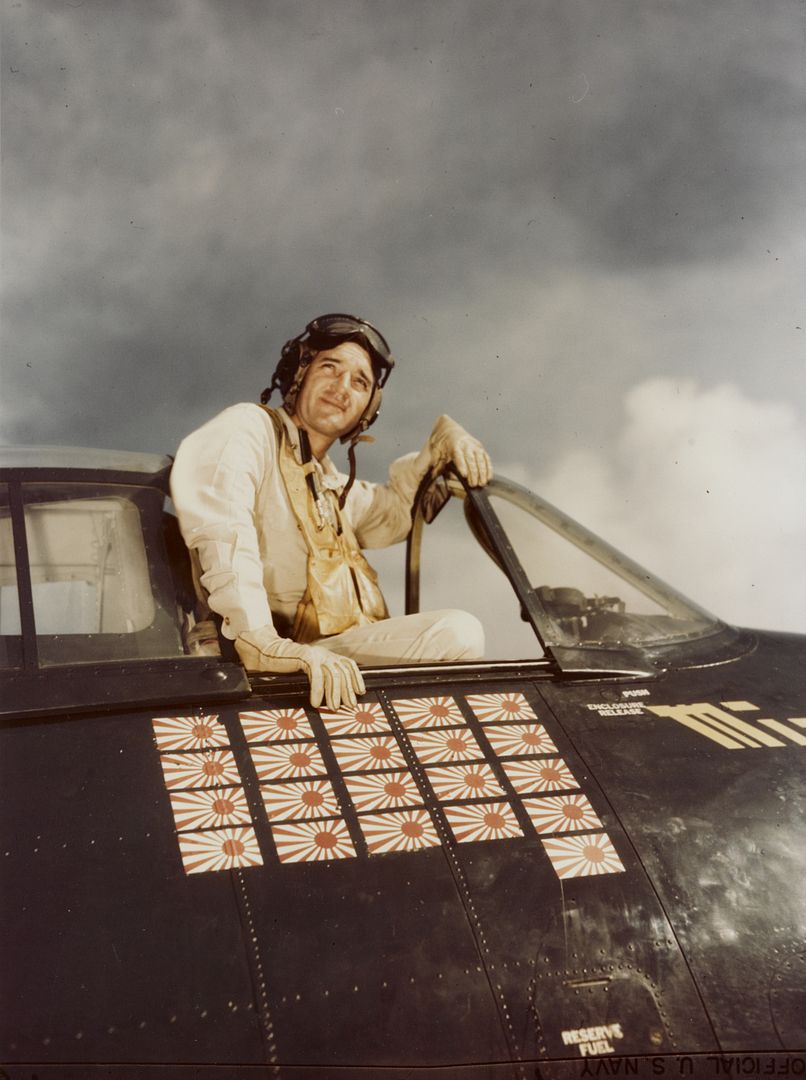
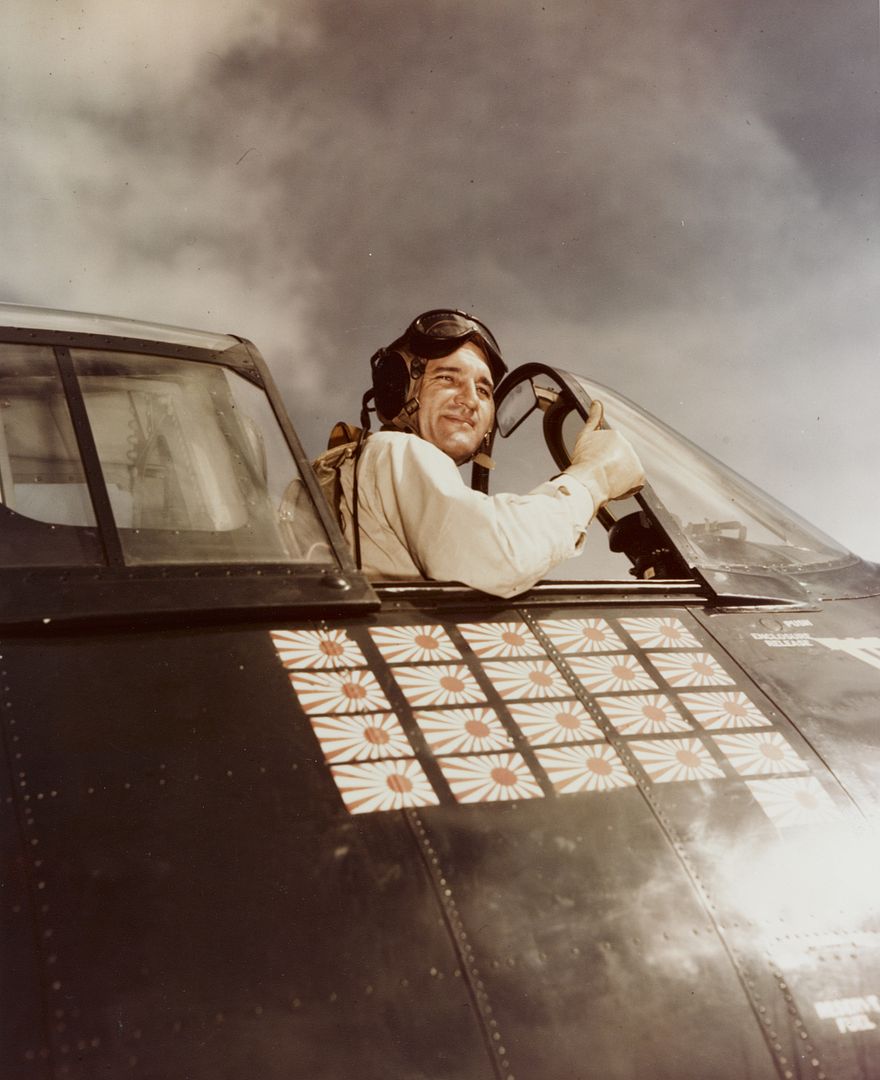

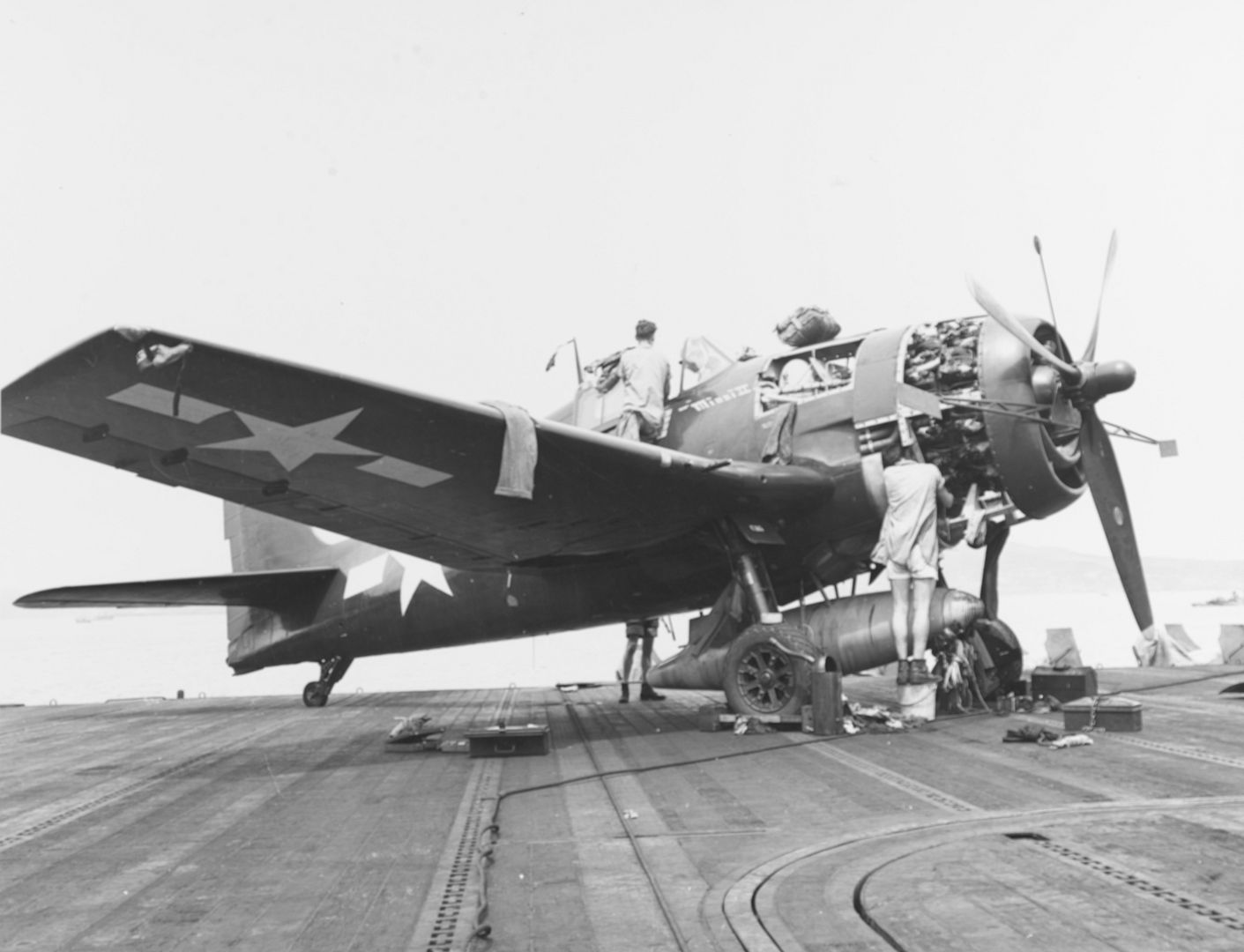
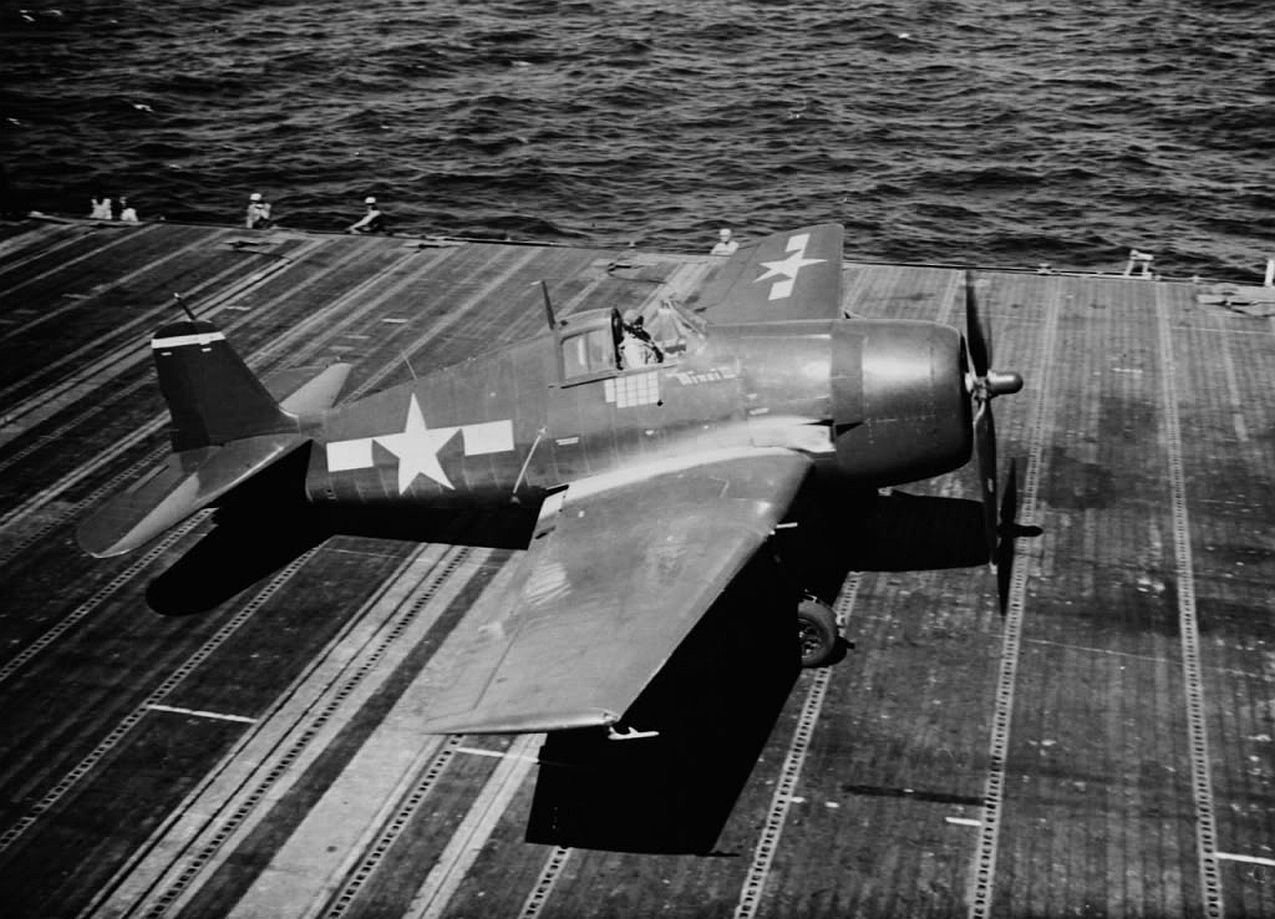
-
 Main AdminWednesdays photo.
Main AdminWednesdays photo.
Seen from the island of USS Yorktown (CV-10) on 6 May 1943. A Grumman F6F-3 Hellcat fighter is parked on the carrier's deck-edge elevator, in the foreground.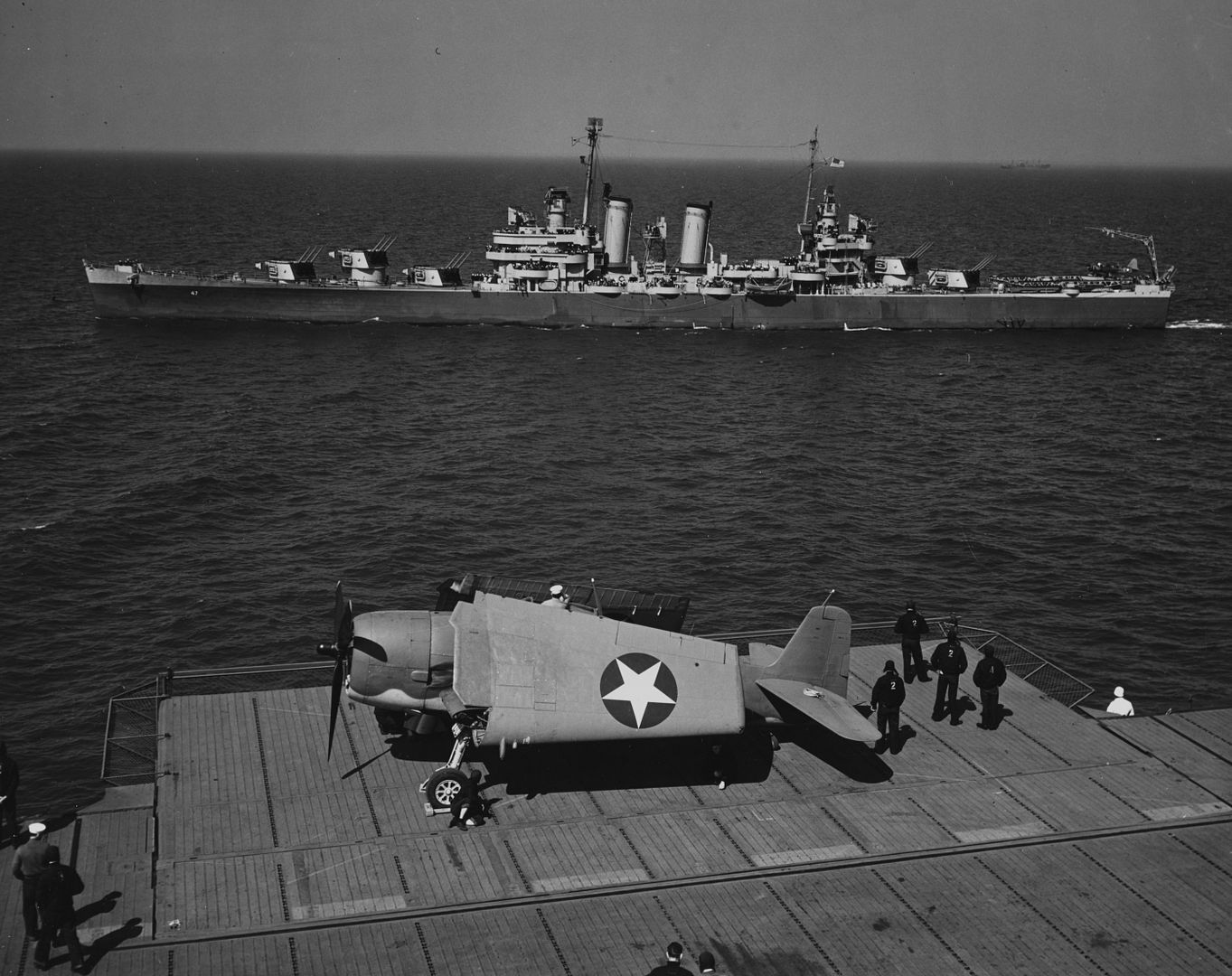
The ship in the background is USS Boise (CL-47) a light cruiser of the Brooklyn class. The cruiser was named for Boise, the capital city of the state of Idaho. Commissioned in 1938, she saw extensive service during World War II, taking part in fighting in the Mediterranean and Pacific theaters. Following the war the ship was decommissioned in 1946 and lay idle until sold to Argentina in 1951. Renamed Nueve de Julio, the ship remained in service with the Argentinian Navy until 1978, after which she was taken to Brownsville, Texas and scrapped in 1983. -
8 years agoSat Apr 01 2017, 04:18pm
 Main AdminThis weeks photo's.
Main AdminThis weeks photo's.
The Canadair North Star was a 1940s Canadian development of the Douglas C-54 / DC-4 aircraft designed for Trans-Canada Air Lines - TCA. Instead of radial piston engines found on the Douglas design, Canadair used Rolls-Royce Merlin engines to achieve a higher cruising speed of 325 mph (523 km/h) compared with the 227 mph (365 km/h) of the standard DC-4. Requested by TCA in 1944, the prototype flew on 15 July 1946 and the type was used by various airlines and by the RCAF. It proved to be reliable but noisy when in service through the 1950s and into the 1960s. Some examples continued to fly into the 1970s, converted to cargo aircraft.
Below. March 24 1956 Vincent Massey becomes the first Canadian governor general to fly over the North Pole in a Canadair North Star aircraft from RCAF 412 Squadron.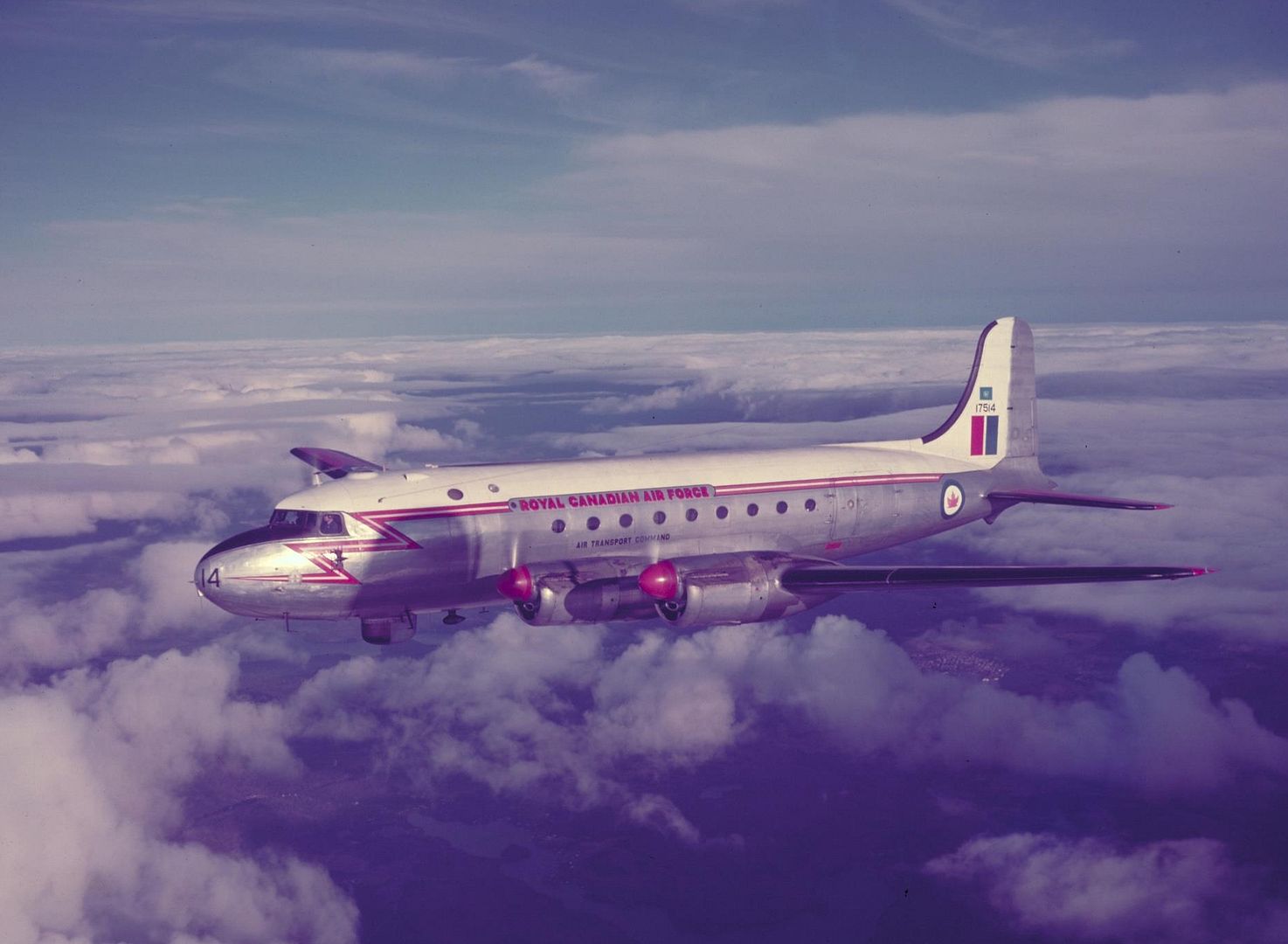
And below a nice close up.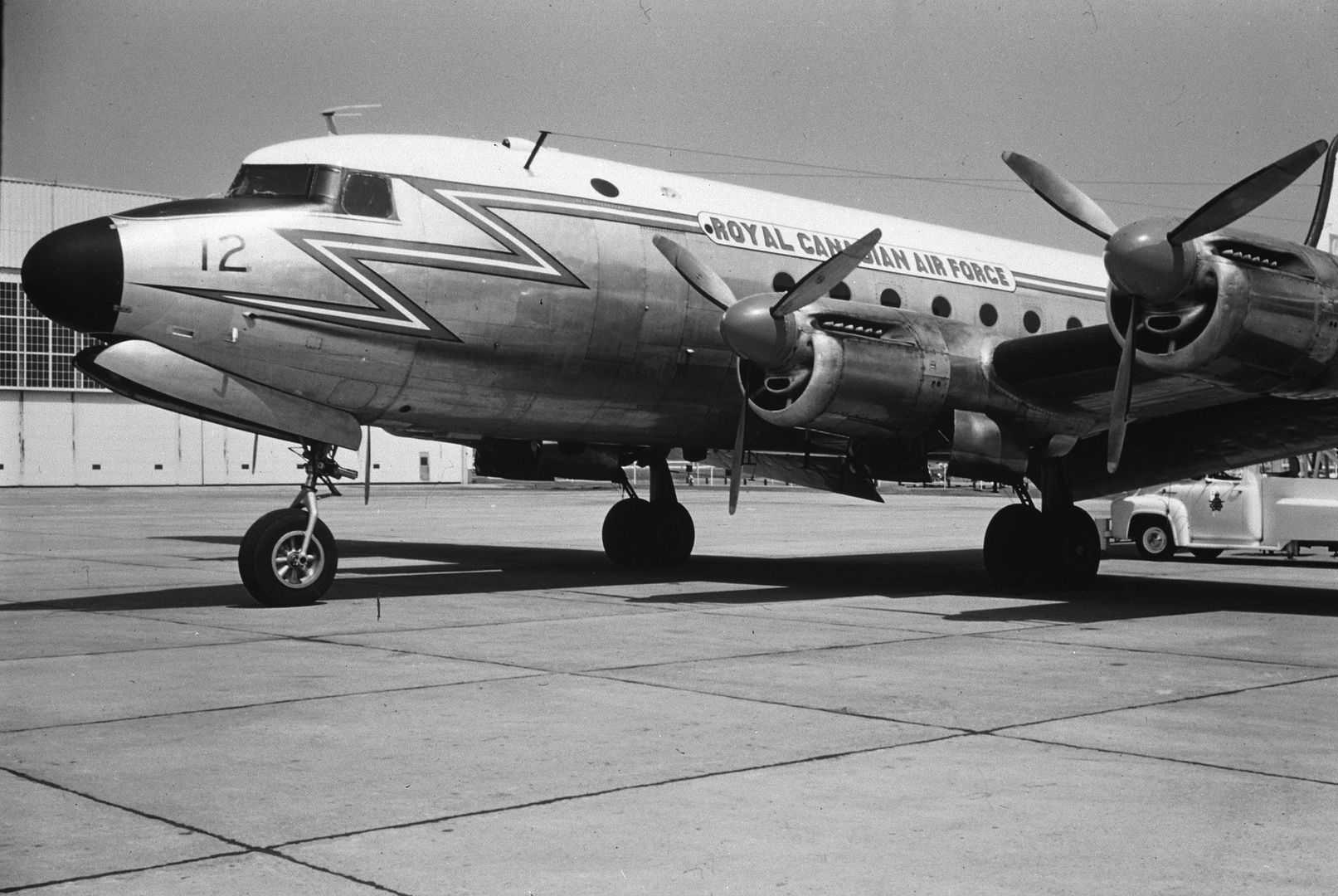
-
 Main AdminThe NA-73X prototype emerged from Inglewood plant in only 102 days, meeting the 120-day deadline with time to spare, although the airplane rolled out of the factory without an engine, which had been delayed at the Allison factory. In the absence of the new disk brakes, the aircraft rolled on wheels borrowed from an AT-6 trainer. It was completely unpainted except for six aperture shapes painted on the wing leading edges to show where the guns would be installed. Those markings were retouched out in photos of the aircraft, and only later was the civil registration [NX19998] applied and the engine hood ahead of the cockpit painted anti-glare black.
Main AdminThe NA-73X prototype emerged from Inglewood plant in only 102 days, meeting the 120-day deadline with time to spare, although the airplane rolled out of the factory without an engine, which had been delayed at the Allison factory. In the absence of the new disk brakes, the aircraft rolled on wheels borrowed from an AT-6 trainer. It was completely unpainted except for six aperture shapes painted on the wing leading edges to show where the guns would be installed. Those markings were retouched out in photos of the aircraft, and only later was the civil registration [NX19998] applied and the engine hood ahead of the cockpit painted anti-glare black.
The reason for delay in engine delivery was because it was "government-supplied equipment" furnished on an as-available basis. Since the NA-73X was a private venture, it was not allocated a very high priority in comparison with P-40s then rolling off production lines. The engine eventually installed was a non-supercharged 1100hp V-1710-F3R. Test pilot Vance Breese flew the NA-73X for its first time on Oct 26, 1940. It was a clear 25 mph faster than the P-40, despite being powered by the same engine.
Following tests there were several changes in the geometry of the ventral ducting and controllable flaps. By the time that the NA-73 had been cleared for production, the duct had had its inlet moved downward so that its upper lip was lower than the underside of the wing, thus avoiding the ingestion of a turbulent boundary layer of air into the radiator cooler.
On Nov 20, 1940, while on its fifth flight, test pilot Paul Balfour forgot to change fuel tanks, ran out of gas, and NA-73X suffered a forced landing, ending up on its back in a farm field. While the mishap put it out of action for several months, since the accident was not the fault of the aircraft itself, it did not unduly delay the program. The NA-73X resumed flying on Jan 11, 1941 and continued in the initial development program until being retired on July 15, 1941.
-
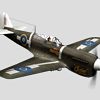 AdminThat Mustang prototype looks so cool with that shape of nose and unpainted, almost like racer
AdminThat Mustang prototype looks so cool with that shape of nose and unpainted, almost like racer
-
 Main AdminWednesdays photo's.
Main AdminWednesdays photo's.
Two this week showing of Ryan publicity picture's of Netherlands East Indies Ryan STM-S2 S-11 on a test flight at San Diego in 1940.
The Netherlands Government in Exile placed a series of orders for a total of 108 Ryans between 20 June and 7 October 1940 for the Netherlands East Indies Army (KNIL-ML) and Netherlands Naval Air Force (MLD). None of the Army Ryans escaped to Australia and all were lost or captured during the Japanese invasion of Java. The order for the NEI naval air arm totalled 48 STMs, of which 24 were to be fitted with twin floats and designated STM-S2, plus 12 extra sets of landplane undercarriages. Ryan assigned construction numbers 447 to 494 to these Navy aircraft, and MLD assigned serial numbers S-11 to S-58. They were built at San Diego in three batches, then shipped to Java.

-
 Main AdminFridays photo's and staying with Ryan ST series.
Main AdminFridays photo's and staying with Ryan ST series.
Two photo's of the final military variant,which was called the YPT-25, which was a version of the ST-4 with a wooden fuselage, developed in case a shortage of "strategic materials" (i.e. of metal etc) developed. Such a shortage did not eventuate and the YPT-25 was not put into mass-production, five built, s/n 42-8703 to 42-8707, c/n 1775 to 1779.
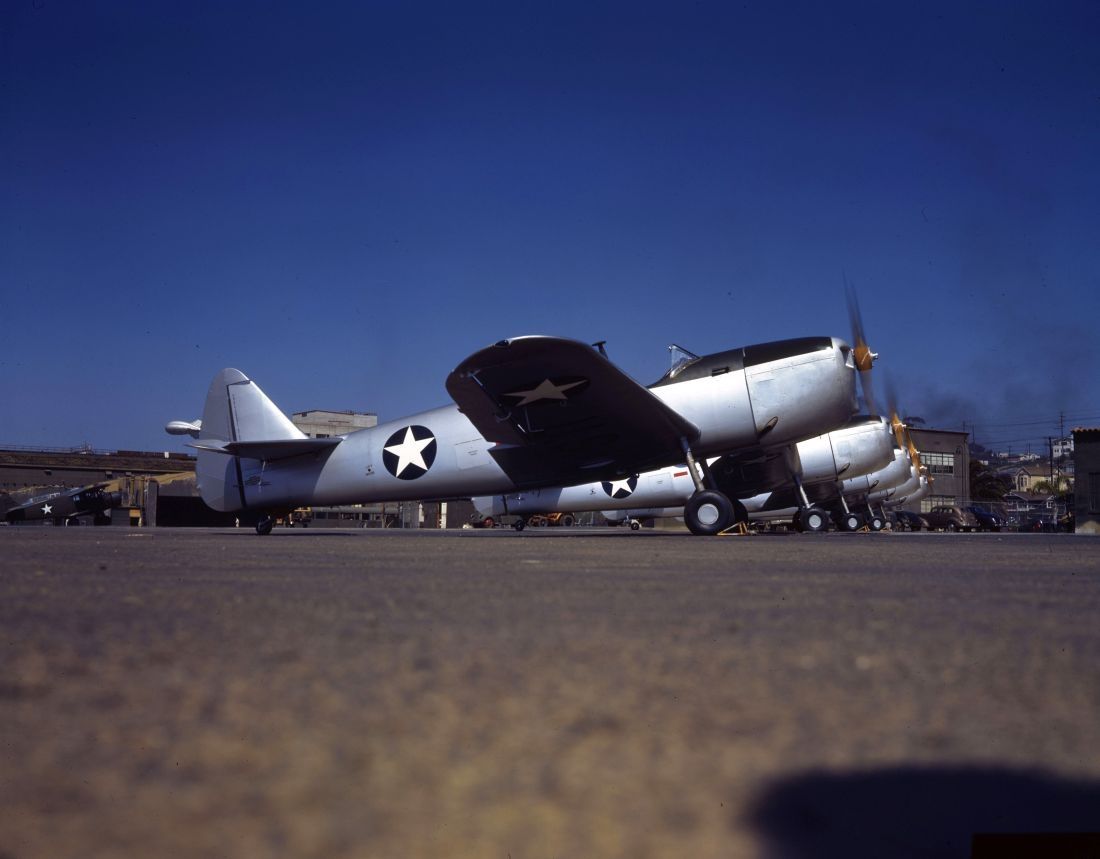
-
 Main Admin
Main Admin -
 Main Admin
Main Admin -
 Main AdminFridays photo.
Main AdminFridays photo.
And a wonderful shot of the 171st and last P-47B (41-6065) used as a test platform under the designation XP-47E to evaluate the R-2800-59 engine, a pressurized cockpit with a hinged canopy and, eventually, a new Hamilton Standard propeller. The plans for production were cancelled after increased emphasis on low-level operations over Europe.
Taken September 1942.
Post a reply
- Go to Previous topic
- Go to Next topic
- Go to Welcome
- Go to Introduce Yourself
- Go to General Discussion
- Go to Screenshots, Images and Videos
- Go to Off topic
- Go to Works in Progress
- Go to Skinning Tips / Tutorials
- Go to Skin Requests
- Go to IJAAF Library
- Go to Luftwaffe Library
- Go to RAF Library
- Go to USAAF / USN Library
- Go to Misc Library
- Go to The Ops Room
- Go to Made in Germany
- Go to Campaigns and Missions
- Go to Works in Progress
- Go to Juri's Air-Raid Shelter
- Go to Campaigns and Missions
- Go to Works in Progress
- Go to Skinpacks
- Go to External Projects Discussion
- Go to Books & Resources

